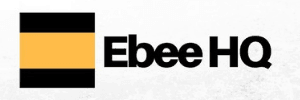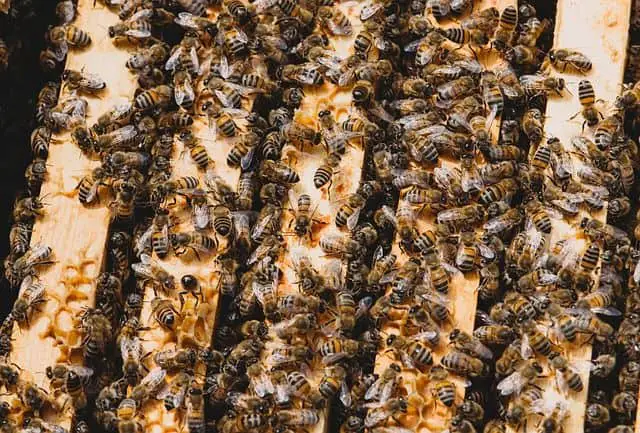Last Updated: 27 November 2025
Table of Contents
What is a Bee Kit?
As a beginner, a beekeeper beginner kit will help take away the hassles of deciding what is important and what is not as you get started with beekeeping. It is comprised of the essentials needed for your new hobby and should be a must-have for all beginner beekeeper.
If you’re a complete beginner, we recommend taking a read of some of our articles surrounding the topics of how does a beehive work and how to start a beehive, these will help you in the long-run.
It is important that you get a bee kit before acquiring bees for your hive. Once you have a kit, the next step is to select a good site for your honeybee hive. A good locational site should be close to where there are lots of flowers for your bees to collect pollen – although bees can travel quite a distance in search of pollen.
Why Get a kit?
Getting a beginner kit will help consolidate the cost of starting a beekeeping hobby and makes it more affordable, otherwise you would have to purchase all of the equipment individually.
The first piece of equipment most beekeepers need is a high-quality beehive for sale and this is typically available within the bee kit.
In most places, you can purchase a new Langstroth hive for about $300. For a beginner beekeeper, one hive is really all you need to get started with. Later, after you’ve decided whether or not beekeeping is truly a hobby for you, you can always purchase more hives.
A beginners kit is also the best way to ensure you get the essential items needed and not waste money on stuff you don’t need. As a beginner, you want to discover your love for beekeeping first before investing in more equipment.
It’s highly recommended that a beginner beekeeper purchase a kit to ensure that every aspect of beekeeping is taking care of from the beginning. This way you can avoid costly mistakes you might otherwise have made, and ensure that your beekeeping experience is enjoyable.
What’s in the kit?
The exact contents of a beekeeper’s kit will differ from one manufacturer to the next. However, here are some of the most common equipment usually included:
- Bee Smoker
- Hive Tool
- Feeders
- Hive Kit (normally about 8 to 10 frames)
- Beekeeping Safety Gear
- Beekeeping Guide Book
- Telescoping Hive Cover
Bee Smoker
An important supply you will find in this kit is the “smoker”. A smoker is a device that is designed to emit smoke by using various fuels.
Gently blowing small amounts of smoke with a smoker around the beehive causes a feeding response from the bees. When the bees feel threatened, the colony’s guard emits a pheromone and the smoke from the smoker helps mask the alarm pheromone emitted by the guard bees.
Some manufacturers will include bee smoker fuel in the kit but if this isn’t part of your kit, no need to worry because these are not hard to get. There are a number of different fuels available for use with a smoker. Most beekeepers use fuels like rotten wood, pine needles, cardboard, burlap, and twine. Aerosol cans of imitation smoke are also available.
Hive Tool
The hive tool is something that most beekeepers can’t live without. A hive tool looks similar to a putty knife, but it’s more heavy duty. The hive tool is used in separating hive bodies, prying frames apart, and scraping off propolis and wax.
Hive tools come in several different designs. They are completely indispensable in beekeeping operations as you simply can’t open a hive without one.
The most common hive tool in beginner kits is about 7-10 inches (18-25 cm) long. They typically have a curved edge which makes them ideal for scraping and prying. It also has a flat end for prying and a slot for pulling nails somewhere in the middle.
Besides the obvious purpose of a hive tool, there are many other uses. You can also use it to release corroded tie-downs, flatten yellow jackets, cut duct tape, and clean mud from your boots. After your first season of beekeeping, you’ll find that you never want to lay down your hive tool.
It is used so frequently that sometimes it feels like an extension of a beekeepers arm. Hive tools can be easy to lose, so make sure to keep it in an obvious place for handy use.
Feeders
Feeders are found in some starter kits and are primarily used to provide vital feed when natural food sources are not available. There are feeders that you can be filled up without disturbing the honey bee colony and some that are placed on top of the beehive in an empty super so that the bees don’t have to leave the hive to get to the feed.
If you get a feeder in your starter kit, it will be suitable for your needs. Over time, you can swap it out for a feeder that will suit your style of beekeeping. For now, you just need something that can be used inside the hive during the winter, or outside during the summer.
Beekeeping Safety Gear
There are a number of safety precautions that you should take to protect yourself and those around you from harm. Beekeepers Suits, Gloves and veil are essential safety wear this is why you will find them in most bee kits.
Beekeeping has an inherently dangerous aspect to it. Bees can and will sting, and the right safety gear will reduce your chances of being stung.
You should always keep your bee safety gear washed and clean at all times. Bees will generally sting when the guard bee emits a pheromone and this will cause further aggressive action and attacks from the other bees. This pheromone, if left in the fabric of your safety wear, will still be present on your next visit to the hive, which is why your suit should always be kept clean.
Firstly, you’ll get the hive
The first piece of equipment most beekeepers need is a quality beehive and this is available in the kit. The most common type of beehive used in modern beekeeping is called a Langstroth hive or sometimes called a 10 frame hive.
Beehives are normally made of wood but recently, materials like polystyrene and plastic are used. Wood, however, is still the best material for a bee kit.
After you get your beehive up and running, you will need to focus on taking good care of your bees so that they will survive, and produce enough honey for your first harvest.
Inspecting the hive at least 3 times a week and supplying them with enough food and water will keep the hive healthy and thriving.
Many times it’s necessary for a beekeeper to supplement their bee’s diet with sugar water. If your bees haven’t collected an ample supply of honey to last them through winter, you will need to feed them and help them survive the winter.
Beekeeping Guide Book
For the beginner beekeeper, a good beekeeping guide is absolutely essential – even experienced beekeepers can benefit from a good guide. Unlike some hobbies, beekeeping is not something you want to learn through trial and error. A good beekeeping guide will teach you step by step, everything you need to know to go from being a novice beekeeper to becoming an experienced beekeeper.
We recommend either buying the physical, digital or even the audiobook (since the audiobook is free with Amazon Audible’s 30-Day Free Trial) version of ‘Beekeeping: The Essential Guide‘.
Equipment
A good guide will teach you about the equipment you need to start with and exactly how to use the equipment. It will help you understand the types of bees that are best for your area, and where to get these bees as well as the best time of the year to get started. Here’s what you’ll learn from a beekeeping guidebook:
Safety precautions
A beekeeping guidebook will also show you some of the safety precautions you need to be aware of and the best location for your beehives.
Operational training
The guide will also help you decide on the number of bees you should start with and the kind of flowers that will produce the best honey. It will answer questions like how to care for your bee colonies through the winter months and how to identify all the diseases that can afflict honeybees.
Harvest
A complete beekeeping guidebook should also teach you exactly when the best time is to harvest the honey from your beehives, and the best methods to use for your honey harvest. There will be detailed diagrams and information that leaves nothing to the imagination.
In the very least, a guidebook will teach you the basics of beekeeping as a business. Such as the best extraction, and packaging methods to use. And where to get the specialized supplies you will need. Because beekeeping supplies are not always readily available locally, a good beekeeping guidebook will provide you with a list of manufacturers that other beekeepers have used and have had good experiences with.
Where can I get the bee kit?
Beekeeping can grow into a lucrative money-making business. Most years there is more of a demand for honey than there is a supply of honey. A good bee kit is the easiest way to get started in the industry and turn a hobby into a business.
Our Recommendations
Take a look at our Top 12 Best Beekeeping Starter Kits article, where you can find the most positively reviewed products that exist in 2019.
It’s recommended that you buy your beekeeper supplies from a reputable supply business. We suggest purchasing your beekeeping starter kit from Amazon; Since you can filter based on product ratings, and you have the ability to see in-depth reviews on each product.
There are many reliable amazon sellers offering high-quality bee kits at truly affordable prices. Some of our favourite bee kits are
- Mann Lake – Basic Beekeeping Kit (Pre-Assembled and Painted) – Buy on Amazon
- Basic Beekeeping Kit (Pre-Assembled) – Buy on Amazon

